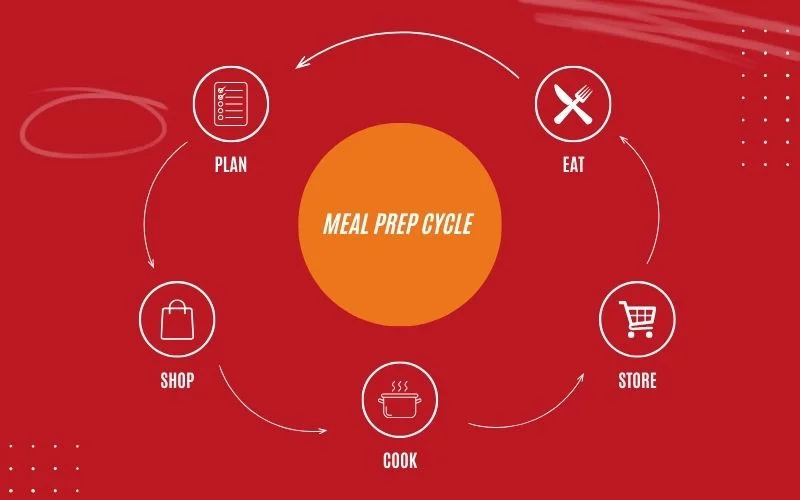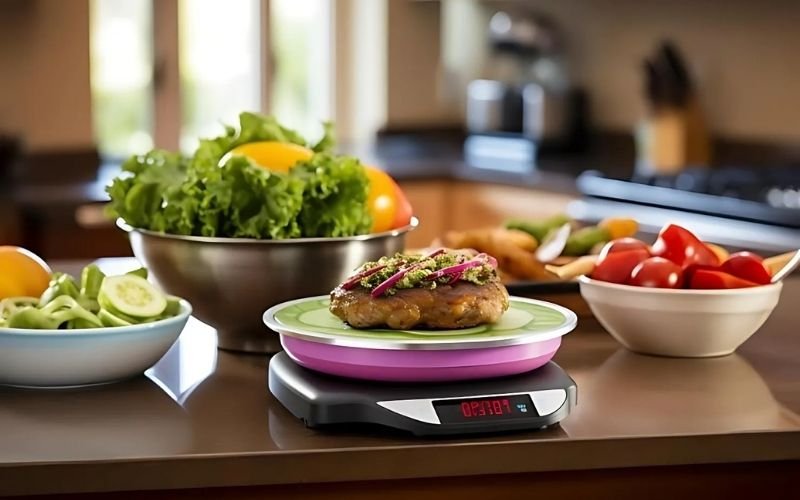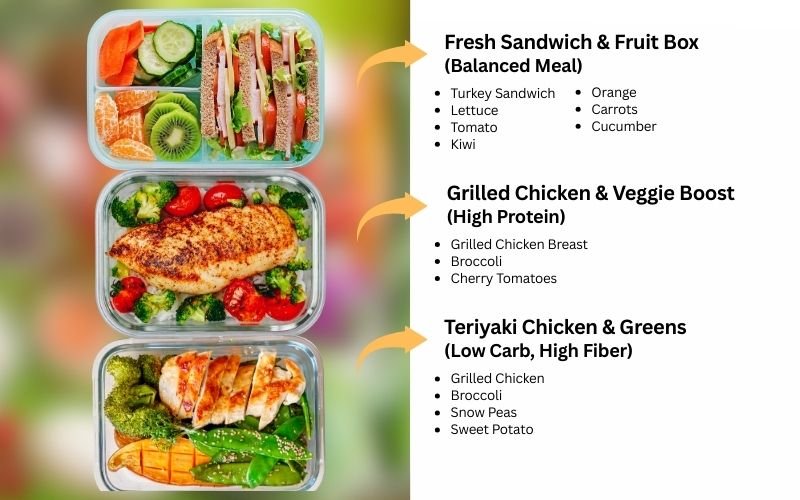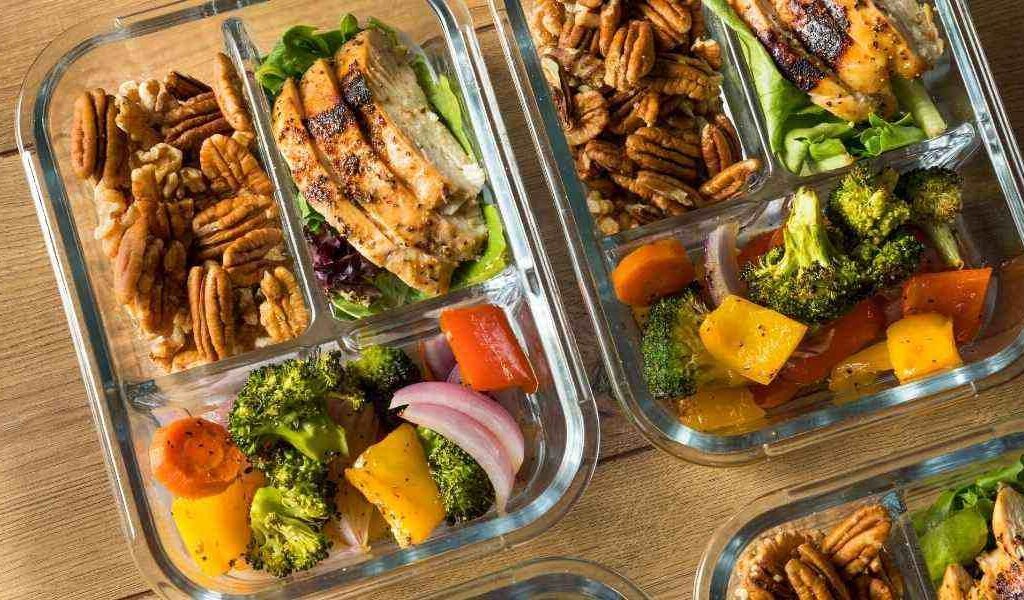Meal prep is often portrayed as a time-consuming chore, but what if I told you that the right meal prep strategy can save you hours and thousands of dollars per year?
What is Meal Prep, Really?

Meal prep is the process of planning, cooking, and storing meals in advance, usually for the week ahead. The primary goal? Save time and money and reduce food waste. While the benefits are real, many people jump into meal prep without a strategy—leading to burnt-out Sundays, repetitive meals, and uneaten leftovers.
The Ugly Truth: Meal Prep Isn’t for Everyone
Here’s a hard pill to swallow: meal prep can be a time-waster if you’re not doing it correctly. Many beginners spend hours cooking, only to find out:
- They made too much food
- They got bored of eating the same thing by Wednesday
- They wasted groceries
- Their meals didn’t store well
This doesn’t mean meal prep is bad—it just means you need to prep with intention.
After years of trial and error, I developed a 10-minute meal prep system that helped me slash my food expenses by $3,000 last year alone—without sacrificing nutrition or flavor.
In this guide, I’ll break down my exact meal prep strategy, including:
✔ The fastest way to prep meals (no chopping marathons)
✔ How to cut grocery bills by 30% (exact shopping tactics)
✔ The 5 kitchen tools that save the most time (affordable & efficient)
Whether you’re a busy parent, a professional with no time, or just someone who hates wasting money, this meal prep strategy will transform your relationship with food.

Let’s dive in.
Other Recommended Articles:
10 Deadly Sports Nutrition Mistakes Sabotaging Your Performance (Simple Fixes to Boost Your Game!)
10 Powerful and Effective Weight Loss Diets That Actually Work
Why This Meal Prep Strategy Works (The $3,000 Secret)
Most meal prep guides focus on spending hours on Sundays cooking massive batches of food. The problem? By Wednesday, you’re tired of leftovers, and half of it goes to waste.
My 10-minute meal prep strategy is different because it’s based on three key principles:

- Minimal Active Cooking Time (batch only what you’ll actually eat)
- Smart Ingredient Overlap (use the same foods in multiple meals.)
- Strategic Frozen & Pre-Cut Foods (yes, they can be healthy and cost-effective)
A 2025 study in the Journal of Nutrition Education and Behavior found that people who followed a simplified meal prep strategy like this were 63% more likely to stick with it long-term compared to traditional methods.
The 10-Minute Meal Prep Strategy (Step by Step)
Step 1: The 5-Minute Planning Session
Strategy: Instead of planning 7 different dinners, focus on 3 core meals and mix-and-match components.
Example:
- Protein: Rotisserie chicken (pre-cooked)
- Carbs: Instant rice or pre-cooked quinoa
- Veggies: Frozen stir-fry mix or pre-washed salad greens
Why It Saves Money: Buying versatile ingredients in bulk reduces waste.
Step 2: The 10-Minute Weekly Prep
Do this every Sunday (or your least busy day):
- Cook 1 protein in bulk (e.g., bake a tray of chicken thighs or tofu—no flipping needed).
- Prep 1 carb base (instant pot rice, quinoa, or roasted sweet potatoes).
- Wash & store veggies (use pre-cut or frozen to save time).
Total active time: 10 minutes (while the oven/rice cooker does the work).
Pro Tip: A good rice cooker lets you set-and-forget grains while you prep other components.
Step 3: The 2-Minute Daily Assembly
Each night (or morning), combine your prepped ingredients in new ways:
- Bowl 1: Chicken + rice + teriyaki sauce + frozen stir-fry veggies (microwaved).
- Bowl 2: Same chicken + quinoa + salad greens + Caesar dressing.
No boredom, no waste.
5 Tools That Make This Meal Prep Strategy Effortless
- Rice Cooker (Perfect grains every time—this affordable model is my go-to).
- Sheet Pans (Non-stick for easy cleanup).
- Glass Meal Prep Containers (Microwave & dishwasher safe).
- Pre-Cut Frozen Veggies (Just as nutritious, half the work).
- Slow Cooker (For soups/stews with zero effort).
FAQs: Your Meal Prep Strategy Questions Answered
1. Can I really save $3,000/year with this?
Yes. The average household wastes $1,500/year on uneaten food. Add saved takeout costs, and $3,000 is realistic.
2. Isn’t frozen/pre-cut food more expensive?
Surprisingly, no. Pre-cut frozen veggies often cost less per serving than fresh (since they last longer).
3. What if I get bored of the same foods?
The key is swapping sauces/spices. Same chicken + different seasonings = totally new meals.
4. Do I need to eat the same thing every day?
Not at all! This meal prep strategy is about efficient bases, not identical meals.
To maximize this meal prep strategy, a few tools help:
- A high-quality rice cooker (like this one) ensures perfect grains every time.
- Durable glass containers prevent leaks and last for years.
- Pre-cut frozen organic veggies save time without sacrificing nutrition.
Final Thoughts
This 10-minute meal prep strategy isn’t about perfection—it’s about sustainable savings. By focusing on smart shortcuts, you’ll save time, money, and stress.
Ready to start? Pick one tip (like the 3-core-meal plan) and try it this week!




